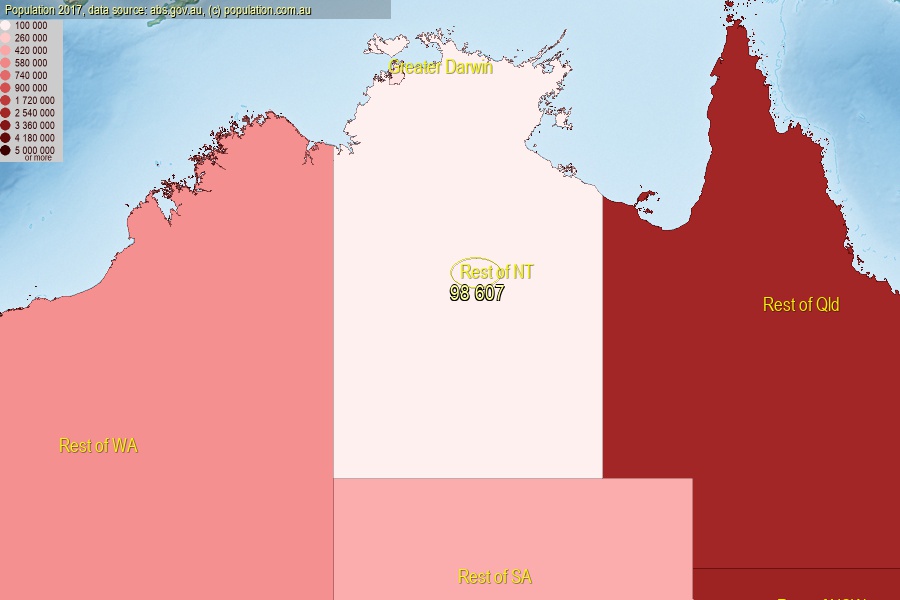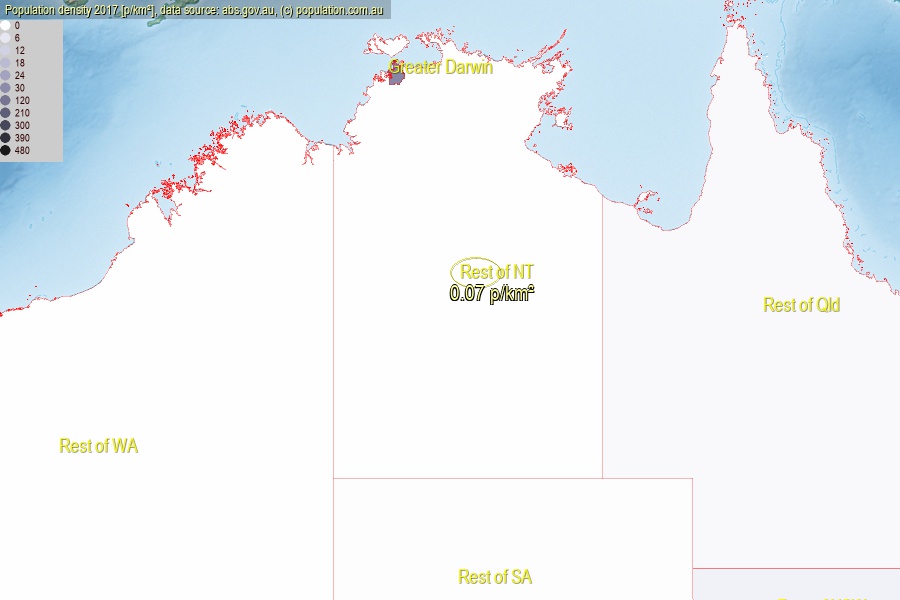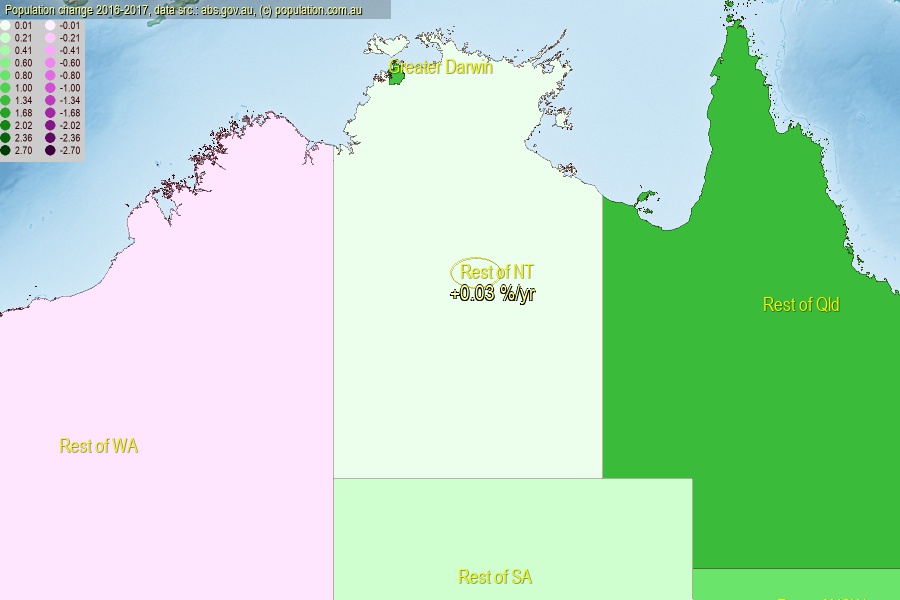 population.com.au
population.com.auLast official estimated population of Rest of NT (as Greater Capital City Statistical Area) was 98 607 people (on 2017-06-30)[2]. This was 0,4% of total Australian population. Area of Rest of NT is 1 344 930,00 km², in this year population density was 0,07 p/km² . If population growth rate would be same as in period 2016-2017 (+0.03%/yr), Rest of NT population in 2025 would be 98 855. [0]



Click to enlarge.
Population [people], population density [p./km²] and population change [%/year] [2]
[1991-1992] +2,07 %/Y
[1992-1993] +1,77 %/Y
[1993-1994] +1,64 %/Y
[1994-1995] +2,02 %/Y
[1995-1996] +2,46 %/Y
[1996-1997] +2,26 %/Y
[1997-1998] +1,43 %/Y
[1998-1999] +1,28 %/Y
[1999-2000] +1,17 %/Y
[2000-2001] +0,78 %/Y
[2001-2002] +0,12 %/Y
[2002-2003] -0,30 %/Y
[2003-2004] +0,17 %/Y
[2004-2005] +1,14 %/Y
[2005-2006] +1,14 %/Y
[2006-2007] +1,27 %/Y
[2007-2008] +1,91 %/Y
[2008-2009] +2,08 %/Y
[2009-2010] +1,23 %/Y
[2010-2011] +0,23 %/Y
[2011-2012] +0,61 %/Y
[2012-2013] +0,43 %/Y
[2013-2014] -1,48 %/Y
[2014-2015] -1,91 %/Y
[2015-2016] -1,20 %/Y
[2016-2017] +0,03 %/Y
[0] Calculated with linear interpolation from officially estimated population
[1] Read more about GCCSA on abs.gov.au
[2] Population data from Australian Bureau of Statistics / ABS.Stat (Population and density: 2017; change: 2016-2017)
[3] Digital Boundaries: Australian Statistical Geography Standard (ASGS) 2016.